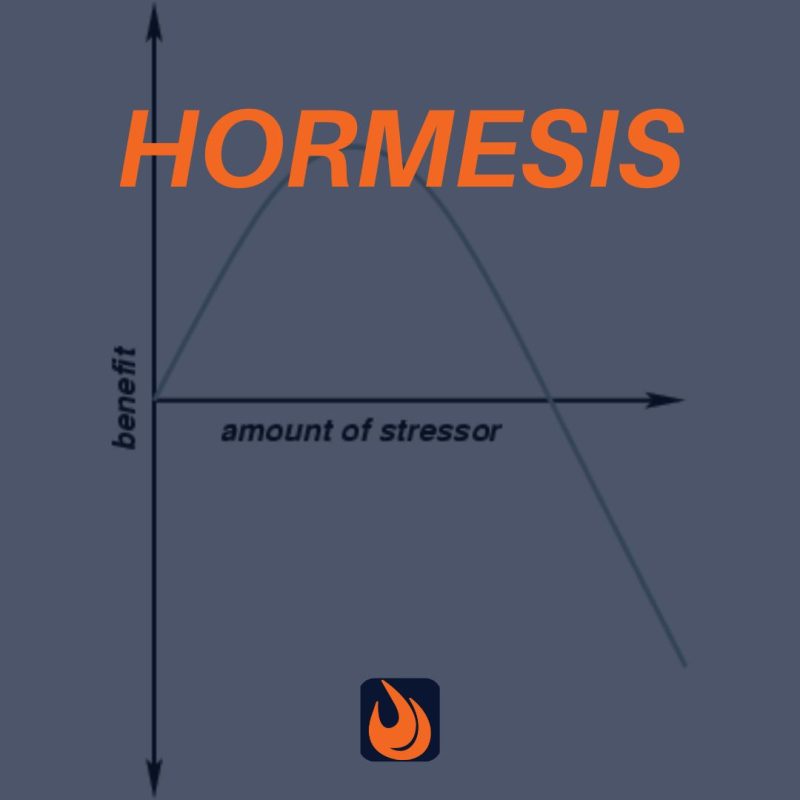
Personal trainers are much more than just rep-counters. We are tasked with helping motivate people to become healthier and to adopt lifestyles that improve their quality of life. It would be foolish to leave psychological and behavioral variables out of this endeavor. Hormesis is one of those variables that most trainers may never have heard of, but the influence of which affects our clients 100% of the time. Let’s break it down.
What is Hormesis?
Hormesis means obtaining the beneficial effects of mild stress on the human body over time. The technical definition is that hormesis is a dose-response phenomenon. It’s characterized by low-dose stimulation and high-dose inhibition.
Hormesis can positively impact aging and longevity and athletic performance if leveraged properly. It has been recognized as representing overcompensation for mild environmental stress.
How can Personal Trainers Leverage Hormesis?
Personal trainers can leverage hormesis directly with client exercise programming. Utilizing the concept of hormesis can put an athlete in the hormetic zone, whereby the biological response to low exposure to environmental stress (in this case, training) is generally favorable to the human body. This means, subjecting your clients to too much too soon is likely to have the opposite effect on not only their exercise success but also on their desire to continue.
What are Examples of Hormesis?
The concept of hormesis can be leveraged in ischemic preconditioning (IPC). This allows an adaptive response of cells and organisms to moderate intermittent (rather than constant, unyielding) stress. Ischemic preconditioning is an experimental technique for producing resistance to the ischemia, or the loss of blood supply, and thereby oxygen, to a variety of tissues in the human body. For example, IPC in the heart is where repeated short episodes of ischemia protect the myocardium against a future ischaemic insult.
In other words, research shows that, generally speaking, an aged adult with a history of heart attacks is more likely to survive a heart attack than a younger, healthy adult. Surprising, right?
This is because, over time, the aged adult with a history of heart attacks’ heart has adapted several pathways to allow blood flow to compensate for a blocked artery.
On the other hand, a healthy adult heart hasn’t. So, when a healthy adult heart experiences a heart attack for the first time, it’s a huge shock and the heart has to create the compensation for the first time.
Hormesis and Exercise
In exercise, as personal trainers we know that exercise selection and prescription are very important to help our clients get the results they’re looking for without injuring them. Too much weight is no good. Too many repetitions without having proper muscular endurance is no good. We have to build clients up. We all know we can’t just put them on a treadmill at a 9-10 speed with a 5 incline the first week they come to work with us. But, if we tax the body slightly more than last time every time, the body will rebuild and return back stronger (unless there’s some sort of underlying medical condition).
Another way this is described is through Arndt Shulz Law (used primarily in the field of Medicine). This law states that a minimal dose of a drug stimulates, a medium dose inhibits, and a large dose destroys cellular activity. For example, if too high of a dose of medication is given it can harm the person. If it’s too little, it will not have the therapeutic effect we want.
As health and fitness coaches, want to prevent injuring our clients or exasperating existing ones. But, we do need to challenge our clients and push them outside of their comfort zone, so there will always be some level of risk. If we do our initial assessment and documentation correctly, our clients will be aware of this risk.
Hormesis and Nutrition
Fasting can be very beneficial in a certain amount for certain people. For example, if an athlete is doing proper intermittent fasting, the body will go into repair mode, diverting resources from digestion to cellular repair. This process makes the body stronger and decreases oxidative stress. But if an athlete fasts for too long, the human body starts taking up muscle and organ tissue to fuel metabolic function. This has deleterious effects such as atrophy, catabolism, pulling minerals from bones, confused thinking, poor executive functioning, etc.
In contrast, eating too much of anything, even if it’s perceived as “healthy” can be toxic as well. For example, if an athlete is sensitive to oxalates and consumes too many almonds or spinach (which are rich in oxalates) it can result in arthritis and other unexpected pain conditions. If the athlete already has arthritis or pain, a high-oxalate diet can make it flare up.
The goal with hormesis is to find the optimal training zone for a client with regard to diet and exercise. While we are not registered dieticians or nutritionists, we can coach and educate our clients on nutrition and eating a balanced diet while also guiding their exercise programming.
References
https://www.sciencedirect.com/topics/agricultural-and-biological-sciences/hormesis
https://pubmed.ncbi.nlm.nih.gov/20686325/#:~:text=Hormesis%20is%20defined%20as%20a,been%20studied%20for%20many%20years







